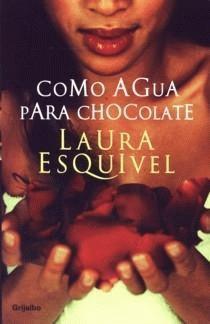
Mucho antes de que se empezaran a poner de moda los programas de televisión sobre cocina, hubo una novela llamada Como agua para chocolate, de la mexicana Laura Esquivel, donde las recetas de cocina no solo le daban sentido al título, sino que el desarrollo de la historia y los personajes no se hubieran comprendido de la misma manera de no ser por las artes culinarias. En cualquier otra narración, los objetos que hay alrededor de los protagonistas son tan solo eso, objetos que no suelen tener mayor importancia. Pero para los que hayan leído esta novela, saben que Esquivel es capaz de convertir utensilios culinarios en protagonistas mudos durante toda la obra, y no solo eso, sino que además las distintas fases para cocinar el alimento parecen corresponderse con los estados de ánimo de los personajes. Es por eso que puede considerarse la cocina, y todo lo que tiene que ver con ella, como un símil para explicar la mente humana; además, también es de gran ayuda para que el lector pueda entender qué es lo que están sintiendo los protagonistas.
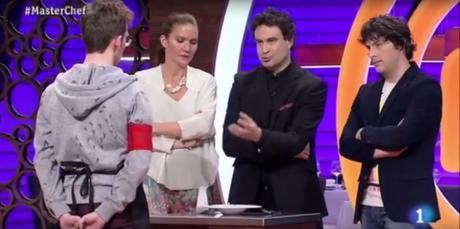
Eso intentan hacer en los programas de cocina también, o algo así
El caso es que desde esta perspectiva, es muy hábil emplear ese recurso para describir sentimientos demasiado abstractos y complejos para ser descritos, pero la autora demuestra que se puede usar una actividad tan frecuente y común como es cocinar, para convertirla en una metáfora de las emociones humanas más incontrolables. Uno de los ejemplos que mejor representa esta teoría, tiene que ver con el encuentro entre dos de los principales protagonistas, Pedro y Tita: "El calor del vapor de la olla se confundía con el que desprendía el cuerpo de Tita. El enojo que sentía por dentro actuaba como la levadura con la masa del pan."
Una buena manera de representar la rabia, ¿no es cierto? La ira de Tita es igual que el vapor de la olla, ambas están a presión y no deben abrirse bajo ninguna circunstancia por lo peligrosos que eso resultaría. Pues esto es exactamente lo que ocurre con Tita cada vez que se siente presionada por su novio Pedro. La rabia y la indignación crecen en ella de una manera que es muy difícil de controlar, y si sigue siendo presionada, el resultado podría ser desastroso. Y como había comentado al principio, el título de la obra no solo es una referencia a la comida, sino también al estado de ánimo. Es imprescindible que el agua para hacer chocolate esté hirviendo, y la protagonista hierve de rabia muy lentamente tanto por el comportamiento de Pedro como por el de su hermana Rosaura. La razón de este enfrentamiento, es que Rosaura quiere continuar con la tradición familiar que obliga a la hija menor de una familia a cuidar de la madre hasta su muerte, imposibilitando así cualquier tipo de independencia por parte de la hija. Y como habréis supuesto, Rosaura no es la hija menor de la familia precisamente. Tita es la que odia profundamente esta tradición porque sabe que el pato lo va a tener que pagar ella con su madre, y en cuanto oye a su hermana decir que su futura hija se encargará de ella hasta su muerte, su reacción es la siguiente:
"¡Ojalá que a Rosaura se le hiciera la boca chicharrón! Y que nunca hubiera dejado escapar esas repugnantes, malolientes, incoherentes, pestilentes, indecentes y repelentes palabras."
El chocolate tiene un sabor muy dulce, y el hecho de que Tita esté hirviendo, significa que una vez libere la rabia contenida, obtendrá algo muy dulce a cambio, y es el poder de decidir sobre su vida y su destino. ¿Qué otra cosa hay más dulce que eso, aparte del chocolate?
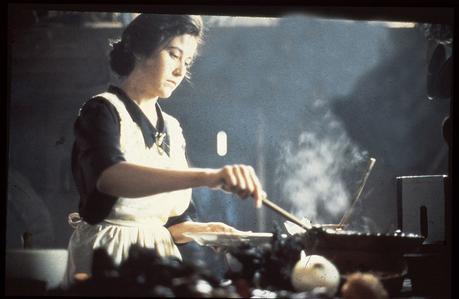
El chocolate, por tanto, representa la rebelión
Otro recurso interesante es ver cómo Esquivel sitúa estratégicamente en el texto estas recetas de cocina, ya que las intercala a lo largo de la novela, alternando entre la pura narración y los pasos sobre cómo preparar un plato culinario concreto. Antes hemos visto la referencia que se hace a la olla a presión para simbolizar el tenso estado emocional de Tita, pero es interesante descubrir cómo las recetas son descritas al detalle cuando los personajes pasan por un momento de relativa calma y tranquilidad. Esto puede deberse a que, para poder cocinar un plato debidamente, hace falta poner mucha atención en lo que se está haciendo, y si emocionalmente nos sentimos nerviosos e irritados, la atención vuela y el plato no se hará a nuestro gusto; además, la cocina se considera una actividad relajante, con lo cual cobra sentido la idea de que las recetas solo aparecen en los momentos menos tensos de la historia. La conclusión que se puede obtener es que Tita, al sentir que no tiene libertad para expresar lo que siente o piensa, dedica todas sus atenciones a la cocina, y ésta se convierte así en la intérprete de sus reacciones, ya sean buenas o malas. Dicho de otra manera, algo que muchos consideran un simple trámite, como es la cocina, es capaz de hacernos entender las sensaciones de la mente humana mucho mejor que los personajes de carne y hueso.
Audiolibro: Como agua para chocolate
Trailer: Como agua para chocolate
Documental: La historia detrás del mito: Como agua para chocolate
Entrevista a Laura Esquivel
Canción: Como agura para chocolate - Ana Gabriel
También podéis encontrar estos vídeos recopilados en el canal del blog:
https://www.youtube.com/channel/UCOq0hbMiz_IBW6kIClelOAQ
Todos los comentarios son bienvenidos.
Fuente de las imágenes:
http://momentosdelecturachile.blogspot.com.es/2015/12/como-agua-para-chocolate-laura-esquivel.html
http://www.minutouno.com/notas/1287089-te-indigno-la-final-masterchef-argentina-mira-lo-que-paso-la-version-espanola
http://www.fotogramas.es/Cinefilia/Cocineros-de-cine--------
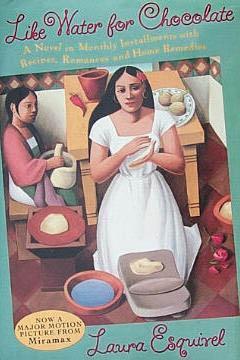
Long before cooking tv shows became fashionable, there was a novel called Like water for chocolate, by the mexican writer Laura Esquivel, where cooking recipes gave a sense to the title, and where the development of the plot and the characters wouldn't be the same without culinary arts. In any other narration, the objects around characters are just plain objects which have no importance. But for those who have read this novel, you know that Esquivel turns cooking utensils into silent protagonists during the whole story, and not only that, but the different cooking steps seem to correspond to character's states of mind. That's why cooking and everything related to it can be considered as an imitation to explain human mind; moreover, this is really helpful for the reader to understand what the characters are feeling.
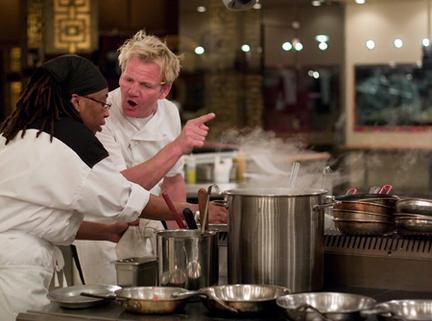
Cooking tv shows try to do something like that too, sort of
From this perspective, it's witty to employ this resource to describe feelings which are too abstract and complex to be properly described. But the author shows that it's possible to use a very commom activity like cooking to turn it into a metaphore of the most uncontrollable human emotions. One of the examples which best represents this theory has to do with the encounter between two main characters, Pedro and Tita: "The steam rising from the pan mingled with the heat given off by Tita's body. The anger she felt within her acted like yeast on bread dough."
It's a good way to represent rage, isn't it? Tita's rage is like a pressure cooker, they are under pressure and they shouldn't be opened under no circumstances due to the danger. This is exactly what happens to Tita every time she feels pressured by her boyfriend Pedro. Rage and indignation grow inside her in a way which is difficutl to manage, and if she keeps being subjected to pressure, the result could be disastrous. As I said at the beginning, the title of the novel is not just a reference to food, but to the state of mind. It's essential that the water to make chocolate is boiling, and Tita boils with rage slowly because of the behaviour of Pedro and Rosaura, her sister. The reason of this confrontation is because Rosaura wants to keep a familiar tradition which forces the youngest daughter to take care of her mother until her death, making the daughter independence impossible. As you may supposed, Rosaura is not the youngest daughter of her family precisely. Tita hates this tradition deeply because she knows she has to carry the can for her mother, so when Tita hears Rosaura saying that her future daughter will take care of her until her death, Tita reacts as follows:
"If only Rosaura had burnt her mouth to a crisp! And never let those foul, filthy, frightful, repulsive, revolting, unreasonable words escape from her mouth." Chocolate has a very sweet taste, and the fact that Tita is boiling means that once she releases her repressed rage, she will get something really sweet in exchange, and this is power of decision over her life and her destiny. What else is sweeter than that, apart from chocolate?
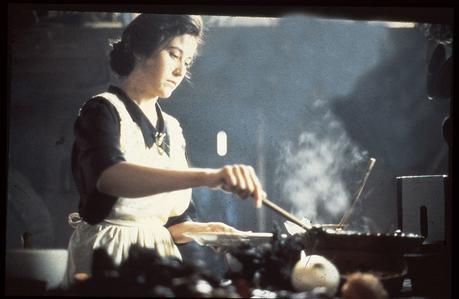
Then chocolate represents rebellion
Another interesting resource is seeing how Esquivel strategically locates these cooking recipes because she interleaves them through the novel; it's an alternation between pure narration and steps to prepare a specific dish. We have seen before the reference to the pressure cooker to symbolize Tita's emotional state, but it's interesting to realize how cooking recipes are described in detail when characters go through relative quiet moments. Maybe this happens because in order to cook a meal, it's necessary to focus on the activity and if we are irritable and anxious, our attention just goes away and the dish won't be good to our pleasure; in addition, cooking is considered a relaxing activity, so it gives sense to the idea that recipes only appear in the less tense moments. The conclusion we get is Tita, who feels she has no freedom to express what she feels or thinks, puts all her attention in cooking, which becomes itself in the translator of her reactions, both good and bad. In other words, something that most people consider as a simple procedure, like cooking, is capable of making us understand human mind emotions much better than real people.
Trailer: Like water for chocolate
Laura Esquivel speech
Song: Como agua para chocolate - Ana Gabriel
You can find these videos on the Youtube Channel too:
https://www.youtube.com/channel/UCOq0hbMiz_IBW6kIClelOAQ
All comments are welcome.
Images source:
http://books4breakfast.blogspot.com.es/2006/04/32-like-water-for-chocolate-laura.html
http://www.headhunterbrian.com/blog-posts/2010/5/16/workplace-bullying-has-no-place-in-restaurants.html
http://www.fotogramas.es/Cinefilia/Cocineros-de-cine------------

